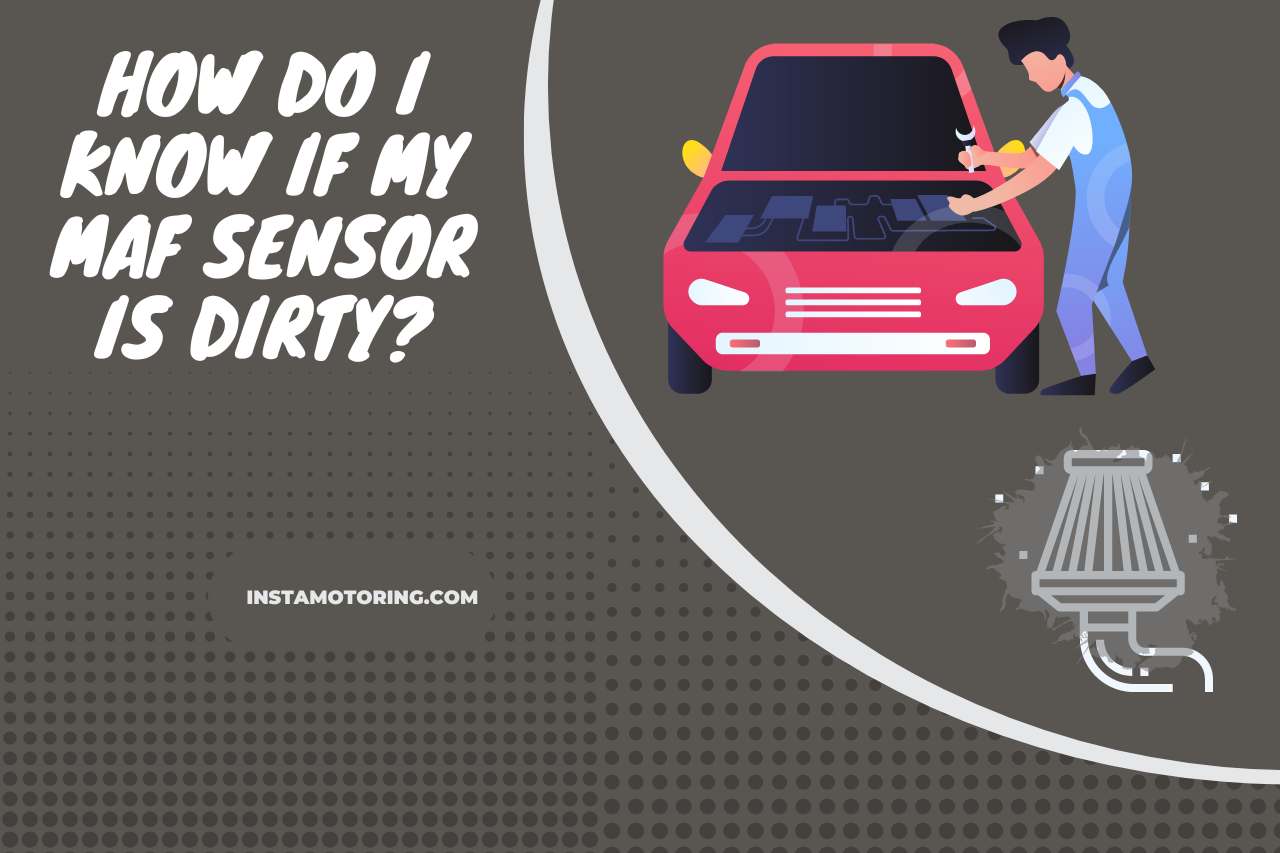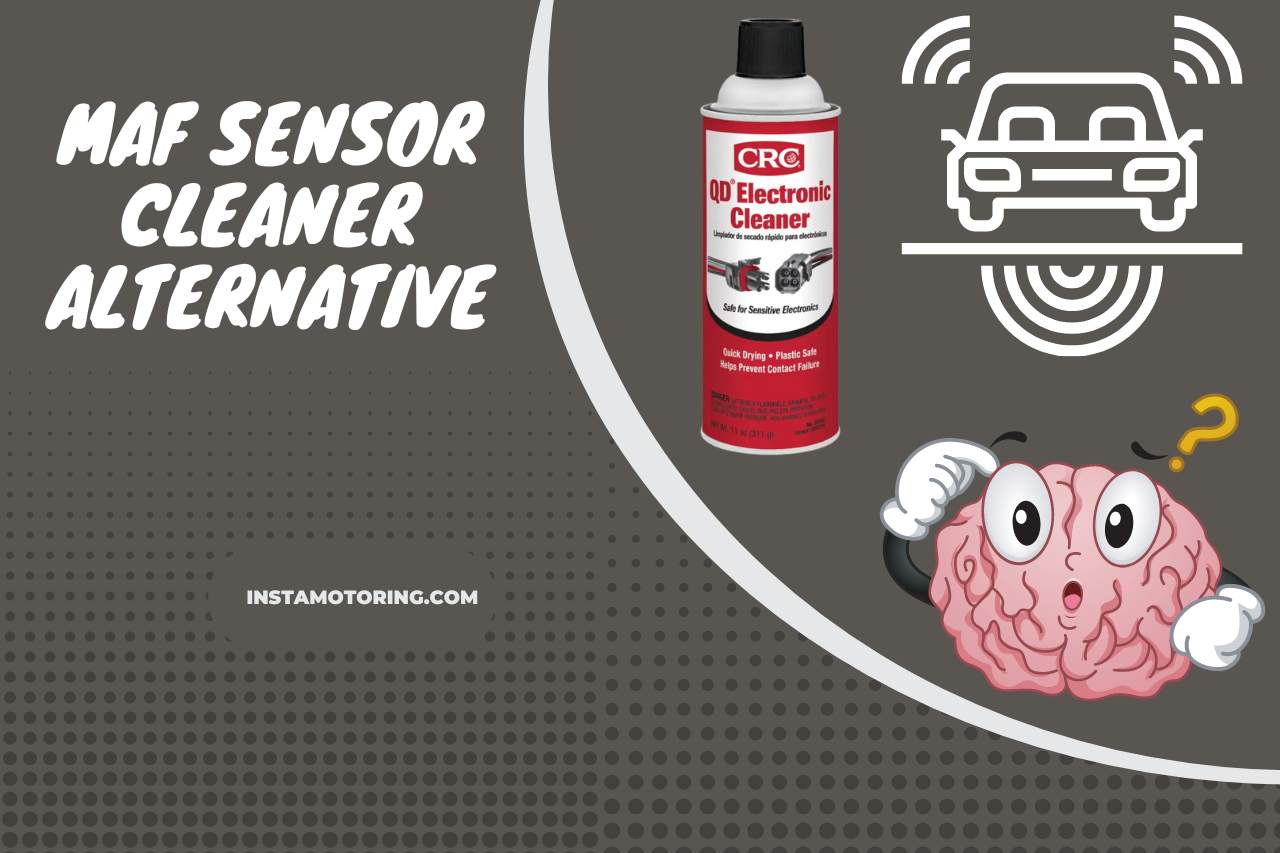MAF Sensor Cleaner Alternative – Navigating Alternative Solutions!
In the realm of automotive maintenance, the quest for a “maf sensor cleaner alternative” has been a topic of considerable discussion among car enthusiasts and professionals alike. The Mass Air Flow (MAF) sensor plays a pivotal role in regulating engine performance, gauging the volume of air ingested by the engine.
While specialized MAF sensor cleaners are recommended for its upkeep, there are scenarios where an alternative solution might be necessary, whether due to unavailability, budget constraints, or emergent needs.
As we progress, we’ll dive deep into these alternatives, evaluating their efficacy and suitability for MAF sensor care.
What Can I Use Instead of MAF Sensor Cleaner?
The most recommended alternative to a MAF (Mass Air Flow) sensor cleaner is an electronic contact cleaner. Specifically, these cleaners are adept at ridding electronic components of contaminants without leaving detrimental residues or causing harm.
The MAF sensor is pivotal in the automotive ecosystem. This nuanced device supervises the volume of air coursing into your engine. A well-functioning MAF sensor translates to optimal engine performance and commendable fuel efficiency.
Dirt or foreign particles adhering to the sensor can usher in issues like diminished power, erratic engine behavior, and unimpressive gas mileage. Although MAF sensor cleaners are tailor-made for this exact purpose, there are situations where they might not be readily available.
Electronic contact cleaners come to the rescue in such scenarios. Their formulation boasts of swift drying capabilities, and they are famed for their residue-free aftermath. However, a word of caution – ensure the cleaner chosen is attuned to plastic surfaces and is devoid of any lubricants or additives that might compromise the sensor’s integrity. A prudent approach would be a preliminary spot-test on an inconspicuous segment of the sensor.
In summation, while makeshift solutions can offer temporary relief, the gold standard remains dedicated MAF sensor cleaners. Always tread with caution, prioritize reading product labels meticulously, and seek guidance from automotive aficionados or professionals when treading unfamiliar territory.
5 Best Mass Air Flow Sensor Cleaner Alternatives
Addressing the quest for the 5 best mass air flow sensor cleaner alternatives, it’s essential to highlight that while specialized MAF sensor cleaners are optimal, there are other solutions that can step in when needed. Here’s a concise rundown:
- Electronic Contact Cleaner: Often the top pick for many DIY enthusiasts and mechanics, electronic contact cleaners are designed to purge contaminants from sensitive electronic components. They dry swiftly and leave no residues, making them an efficient substitute.
- Isopropyl Alcohol (IPA): Commonly found in many households, IPA is a powerful cleaning agent. When used in its pure form, it can safely clean the MAF sensor, ensuring no residues are left behind.
- CRC QD Electronic Cleaner: This quick-drying formula effectively removes dirt, dust, and oil from electronic components, offering a safe and efficient alternative for MAF sensor cleaning.
- Brake Cleaner: While this might sound unconventional, brake cleaner’s strong cleaning properties can serve in a pinch. However, ensure it’s a non-chlorinated version to avoid potential damage.
- Compressed Air: A gentle burst from a can of compressed air can dislodge debris or contaminants. It’s less invasive but works best for lightly soiled MAF sensors.
How Does a Dirty MAP Sensor Affect Vehicle Performance?
The MAP (Manifold Absolute Pressure) sensor’s job is to relay manifold pressure data to the Engine Control Unit (ECU). With inaccurate data due to dirt or grime, the ECU might adjust the fuel injection and ignition timing poorly. This can lead to a compromised air-to-fuel ratio, making the engine either too “hungry” (lean) or too “flooded” (rich).
Such Imbalances Manifest As:
- Power Lapses: You might feel your car drag, especially during accelerations.
- Fuel Wastage: The engine becomes inefficient, guzzling more fuel than it should.
- Unpredictable Engine Responses: Expect erratic idling or unexpected stalling.
- Warning Signals: Don’t be surprised if your dashboard’s check engine light pops up.
- Environmental Concerns: More emissions mean your car isn’t as green as it could be.
Over time, neglecting a dirty MAP sensor could even cause lasting engine damage. Prioritizing regular check-ups can prevent these issues, ensuring a smoother drive and a healthier engine.
What Precautions Should You Take When Using Alternative Cleaners?
Eco-friendly and budget-friendly solutions are gaining traction. However, they come with their set of precautions. Here’s what you need to know to use them safely and efficiently.
- A Small Test Goes a Long Way: Before fully embracing any new cleaner, it’s wise to apply a dab on a hidden spot. It’s a two-fold check: for cleaning efficacy and to ensure no damage to materials.
- Suit Up For Safety: Not all natural cleaners are skin-friendly. Donning gloves is a smart move, and for those extra-potent mixes, consider eye protection.
- Breathe Easy with Ventilation: Clean air matters. Whether it’s a store-bought or homemade cleaner, ensure there’s ample airflow in your workspace to keep the environment fresh.
- Kids and Cleaners Don’t Mix: Children are naturally curious. Keep all cleaning concoctions, even the green ones, away from their reach.
- Chemistry 101 – No Mixing: Some natural cleaners don’t play well together. Avoid concocting a mix without verifying its safety.
- Research Before You DIY: Before crafting your cleaner, understand your ingredients. Will they work for your needs? Are they safe? A bit of research can save a lot of trouble.
- Guidelines are Gold: Using a popular DIY cleaner recipe? Stick to the script. It’s popular for a reason – it works when done right.
- Seal and Store: Got a homemade mix? Store any remaining solution in well-sealed containers, clearly labeled, in cool places.
To sum it up, while alternative cleaners promise and often deliver on eco-friendliness and cost-saving, they demand a mindful approach. With the right precautions, you’re on your way to a cleaner, greener home.



How Do I Know If My MAF Sensor Is Dirty?
If your car seems off its game, the culprit might be a dirty MAF sensor. This nifty component gauges the volume of air entering the engine, ensuring a balanced air-to-fuel ratio. When dirt interferes, here’s how you can typically tell.
Your car may start to display rough idling. The engine, struggling with inaccurate air volume readings, might waver in its rhythm or even stall occasionally.
Simultaneously, you might notice your visits to the gas station becoming more frequent as fuel efficiency drops. This decrease happens because an impaired MAF sensor tends to skew towards a richer fuel mix, thinking there’s more air than there actually is.
Another telltale sign is if your car hesitates or jerks when you press the accelerator. It’s as if the engine gets momentarily confused, not receiving the right fuel mix it anticipated. Moreover, that often dreaded check engine light might illuminate, signaling the car’s computer has detected something amiss, possibly with the MAF sensor’s readings.
You might also observe a general dip in engine performance, translating to less horsepower and a hesitant acceleration. If black smoke starts puffing out of the exhaust, that’s a classic sign of an overly rich fuel mixture, again hinting at a MAF sensor issue. And lastly, if your car hesitates to start or feels like it’s on the edge of stalling, the sensor could be to blame.
While these signs can hint at a dirty MAF sensor, a definitive diagnosis often involves using a diagnostic tool. If your MAF sensor seems to be showing these symptoms, it’s a good idea to clean it or seek expert advice, ensuring your vehicle stays in top shape.
FAQ
Can you Use Electrical Cleaner for MAF?
Yes, electrical contact cleaner can be used as an alternative for MAF sensor cleaner. The Mass Air Flow (MAF) sensor is an integral part of your vehicle’s engine management system. While MAF sensor cleaner is explicitly designed for this task, in a pinch, electrical contact cleaner can be a suitable substitute.
It’s designed to evaporate quickly and not leave residues, making it safe for delicate electronic components like the MAF sensor. However, it’s essential to ensure that the cleaner is plastic-safe.
Avoid using products like brake or carburetor cleaners on the MAF sensor, as they can damage the component or leave harmful residues.
What are the Ingredients in Mass Air Flow Sensor Cleaner?
Mass air flow sensor cleaners typically contain a blend of solvents like heptane, isopropanol, and other fast-evaporating chemicals. MAF sensor cleaners are formulated to dissolve and remove contaminants like dust, oil, and other residues from the delicate wire or film of the sensor without leaving behind any residue.
They are designed to evaporate rapidly, ensuring the sensor dries quickly post-cleaning. It’s essential to note that while the primary ingredients are usually solvents, the exact composition can vary by brand.
To understand the specific ingredients of any product, it’s always a good practice to review the Material Safety Data Sheet (MSDS) or product label of the particular MAF cleaner in question.
Can I Use Petrol to Clean Air Flow Sensor?
No, using petrol to clean an air flow sensor is not recommended. The Mass Air Flow (MAF) sensor is a sensitive and crucial component in your vehicle’s engine management system. Using petrol or gasoline to clean it poses risks.
Petrol can leave a residue on the sensor, negatively impacting its performance and potentially leading to inaccurate readings. Furthermore, petrol might damage the sensor’s delicate filaments or coatings.
For effective and safe cleaning, it’s best to use a cleaner specifically designed for MAF sensors or, in its absence, an electrical contact cleaner that’s safe for plastics. Always avoid aggressive solvents or substances not intended for electronic cleaning.
Why does My Car Perform Better When the MAF is Disconnected?
A car performing better with the MAF disconnected may indicate a faulty or dirty MAF sensor. The Mass Air Flow (MAF) sensor measures the volume and density of the air entering the engine.
When working correctly, it allows the engine control module (ECM) to adjust fuel injection and ignition timing accurately. If the MAF is providing incorrect data due to being dirty or faulty, it can cause suboptimal engine performance.
When disconnected, many vehicles revert to a default “limp mode” or use other sensors to estimate air flow, which can sometimes result in smoother or more powerful performance if the MAF was previously underperforming.
However, running without a connected MAF long-term isn’t advised as it can decrease fuel efficiency and increase emissions. If you notice an improvement with the MAF disconnected, it’s a good idea to clean or replace it.
Watch this one,
Video Credits – HVAC Mechanic
You May Also Like



My name is James, I work as an Automotive Designer with 9 years of experience. I also work as a mechanic and vehicle inspector. I love deciphering complicated car exteriors and interiors and resolving fluid and oil troubles. InstaMotoring.com is here to help you troubleshoot your car with dependable and expert help.






![How to Clean Fuel Pressure Regulator? [Complete Guide]](https://www.instamotoring.com/wp-content/uploads/2022/10/Are-Raycon-Earbuds-Waterproof-5-1-768x512.jpg)
